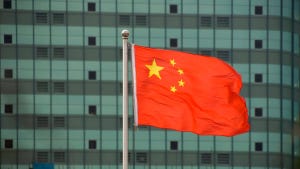March 22, 2016

In the near future, fifth-generation mobile networks (5G) could provide an excellent opportunity to transform our world. The technology will enable forward-thinking companies across many industries to innovate and create services that we can only imagine today. But will 5G fully live up to its promise?
5G is the foundation for realizing the potential of the Networked Society, where anything that can benefit from having a connection will be connected. 5G will enable organizations to move into additional markets and build revenue streams with radically new business models and use cases, including Internet of Things (IoT) applications. (See CEO Chat With Hans Vestberg, Ericsson.)
5G is expected to manage 1,000 times more data volume, handle 10-100 times more devices, provide five times lower latency, and enable a ten-year battery life for certain devices on the network, compared to 4G today. This means it will be possible to download a full-length HD movie in seconds, to have an autonomous car apply its brakes in a couple of centimeters instead of a couple of meters, and to realize the promise of the IoT –- with network capacity to handle thousands of devices and longer battery life to make maintenance of the devices more manageable.
We are now in the midst of the 5G journey. We have just passed important milestones in research and development, and standardization efforts are underway. But if you look at the media coverage around 5G, it is a bit like Valentine's Day. Vendors, service providers and partners send each other Valentine cards, and whoever gets the most cards is perceived as the most popular. This might give the impression that one vendor can create 5G alone, but that is not the case. (See 5G: Hurdles on the Track.)
To create a next-generation mobile network requires extensive co-operation inside our industry but also with new players. 5G is bringing greater levels of co-operation between vendors, service providers, enterprises, media companies and industrial users. Behind the scenes, far away from the Valentine cards, it is about finding and setting a global standard for communication that will impact the way we live, run enterprises and manage our world. Information and Communication Technology (ICT) vendors have been working with 5G for several years, leveraging the experiences from previous generations. However, 5G is more than faster data speeds,and extensive work across many dimensions is required to make it a reality. Let me give you a couple of examples of behind the scenes activities:
Extensive technology research is being conducted inside our premises as well as together with top universities and research institutes. The focus is on evolving existing technology as well as finding new technologies to fulfill the technical requirements. There are industry-level research projects, such as METIS I and II that bring multiple vendors together with academia to help drive the standardization process. (See 5G: Meet the Influencers.)
Digitalization of industries is one of the most important functions of 5G. To understand these needs and learn how to best leverage 5G, we run industry pilot programs with large enterprises from multiple industries. We are spearheading the "5G for Sweden" and "5G for Europe" projects in which our research team is developing innovative use cases for 5G with industries ranging from mining to agriculture to intelligent transportation. These industrial users are interested in leveraging 5G technology to make their businesses more productive and safe. We have just added 100 small cells for indoor coverage inside a mine in the north of Sweden to create a multi-access network for new functions. The goals are to reduce hazardous working situations and improve productivity. (See Meet the Force Behind Ericsson's 5G.)
The leading service providers are now in the game as well. Network operators work with ICT vendors to develop the right strategies for network evolution and to build the new use cases and business models that 5G will enable. We expect to see the first pre-commercial networks as soon as 2018. (See Ericsson Has Inked Nearly 20 5G Test Agreements.)
Making 5G a global standard will take an unprecedented amount of global co-operation. Different industry and standardization bodies in the ICT space will need to be aligned, both in terms of timelines and technology requirements. (See 5G to Underpin the 'Industrial Internet'.)
Behind the scenes the industry is working closely in many areas, such as technology evolution and pre-standardization. The next important milestones are the product roadmaps and deployment of products. That is when the real race will start and it will be time to exceed expectations. By then the Valentine cards will look totally different. They will be based on trust and on delivering on all the promises that 5G has to offer.
For now it is important for the industry to get enough scale in the development to come out with strong technology on a very cost-efficient level. We need to make sure there is one global standard that does not fragment vendors as this would prevent the global scale that we achieved with technologies like LTE. It requires global teamwork, and that certainly will need a lot of love!
— Ulf Ewaldsson, SVP and CTO, Ericsson
About the Author(s)
You May Also Like











